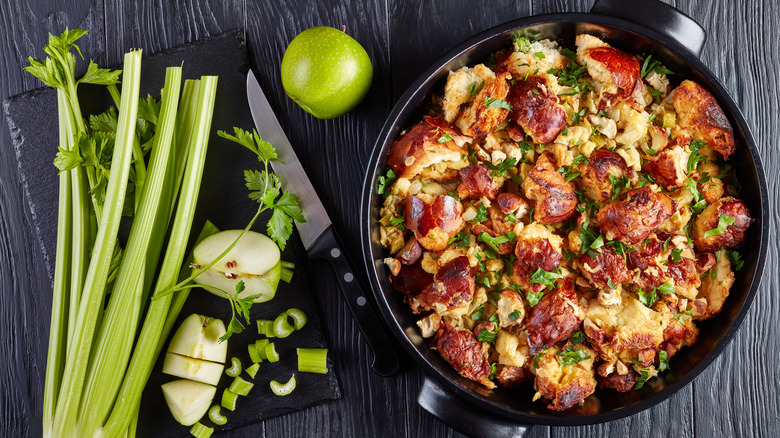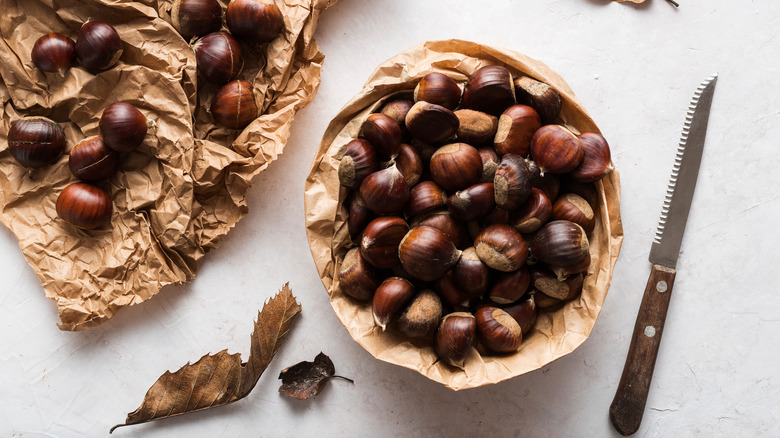Why You Should Include Chestnuts In Your Vegetarian Stuffing
Right off the bat, there are two words that stand out in this forthcoming conversation about stuffing: chestnuts and vegetarian. Stuffing is generally associated with the rather large bird in which it's stuffed into, so vegetarian cooking doesn't necessarily spring to mind. But there's no reason why stuffing can't be eaten without the turkey and at any time of year. A world of possibilities opens when freeing stuffing from its poultry-associated cage while including the addition of chestnuts.
Fresh chestnuts are ripe for harvesting in late autumn through November, explains MasterClass. This is what makes them an ideal addition to winter holiday meals that include stuffing. However, dried, canned, or jarred chestnuts work just as well in most stuffing recipes, including a variation from Vegetarian Times that's perfect for an anytime stuffing fix with no poultry in sight. Jarred chestnuts come already cooked and peeled and they inject a rich nutty flavor into your dish. Canned chestnuts are similar in taste to fresh-roasted ones, per Spruce Eats, and add a perky punch to what can sometimes be a mushy stuffing texture.
Nutty flavor packed with nutrition
As if the slightly sweet, nutty flavor and texture weren't enough to get you whipping up a pan of chestnut-laden vegetarian stuffing, there's a wealth of nutrition hiding inside those thick dark brown shells. Chestnuts are low in fat while packing a whopping amount of vitamin C, from 35% to 45% of the recommended daily allowance in just a ½ cup, per WebMD. They also provide plenty of antioxidants, magnesium, and potassium for heart health, and they contain fiber for improved digestion, gut health, and blood-sugar balance. The chestnut vitamin-and-mineral parade continues with vitamins E, A, B-complex, calcium, zinc, iron, and more (per WebMD).
Popping chestnuts into vegetarian stuffing is an easy way to up your daily intake of nutrients without compromising a meat-free lifestyle. Good Housekeeping encourages you to bypass jars of chestnuts with added sweeteners and syrups, noting that fresh or pre-cooked versions with nothing added pair well with stuffing ingredients such as apples, mushrooms, thyme, and sage.
The power-packed chestnut grows on sturdy trees belonging to the genus Castanea, which live for up to 500 years, per WebMD. That alone earns them a spot of respect in your culinary carousal of healthy ingredients.

